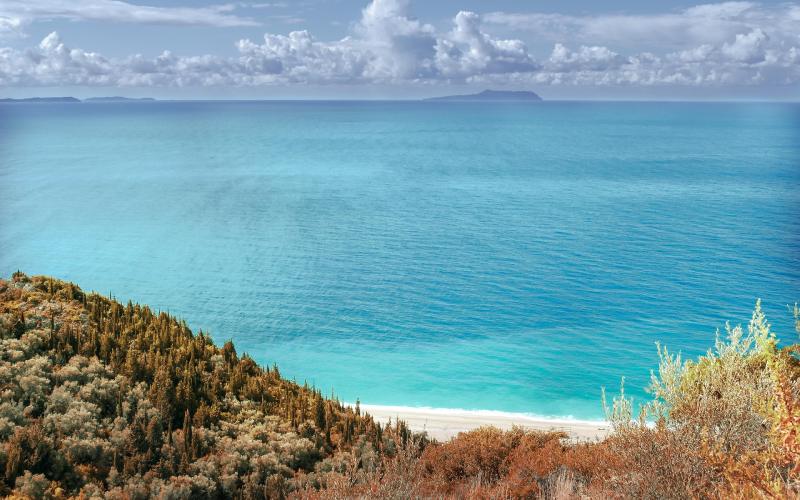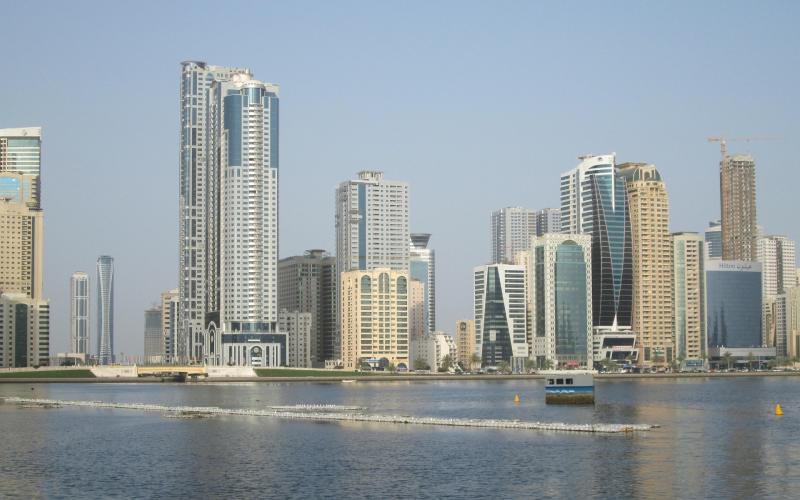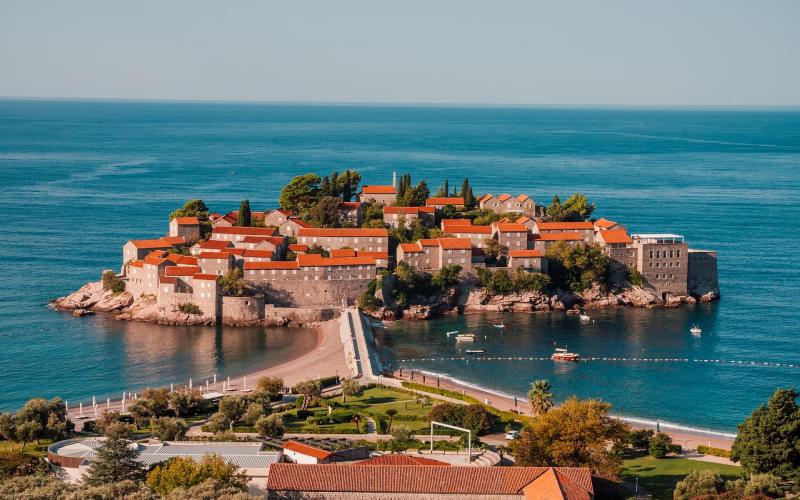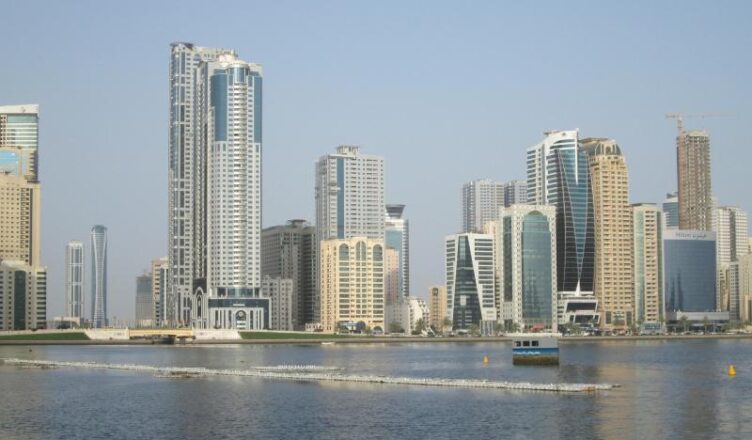Why Use a Schengen Visa for Non-Schengen Countries?
A Schengen visa allows you to travel to 29 countries in Europe with no reason to stop at or cross the borders in the Schengen countries. But its advantages go beyond that, as it also grants access to a number of non-Schengen countries without the need for further visas.
Understanding Schengen Visa Benefits Beyond Europe
The embassies of many Schengen states grant access to other non-Schengen destinations, through bilateral agreements or unilateral strategies, for travelers with a multiple-entry Schengen visa. Countries that accept this visa offer diverse attractions, from Turkey’s historic sites to the pristine beaches in the Bahamas, all accessible with a single visa. This is a testament to its versatility and the interconnectedness of global travel networks.
Top 10 Non-Schengen Countries That Accept Schengen Visas


Albania
Albania, hidden in Southeastern Europe, offers an abundant cultural legacy, breathtaking beaches on the Adriatic and Ionian Seas, and the dramatic scenery of the Albanian Alps. Holders of a valid multiple-entry Schengen visa, which must be used to enter a Schengen area state, are permitted to visit Albania for a maximum of ninety days during a one-hundred-eighty-day time frame.
Turkey
Turkey straddles two continents, Europe and Asia. One can roam the bustling bazaars of Istanbul or navigate the surreal landscape of Cappadocia, and there’s plenty to see and do. Eligible passport holders holding a valid Schengen visa can apply for a single-entry e-visa, which will be valid for one month. Such simple arrangements do wonders for exposing travelers to Turkey’s rich history, culture, and warm hospitality.


United Arab Emirates (UAE)
The UAE, known for its ultramodern architecture, luxury shopping, and rich cultural heritage, is a must-visit destination. Travelers holding a valid Schengen visa can receive a visa on arrival for a maximum of 90 days within a 180-day period. It enables exploration of all seven emirates in the UAE, each with its own highlights: the Burj Khalifa in Dubai and the cultural districts on display in Abu Dhabi.
Colombia
With diverse ecosystems, colonial architecture, and vibrant cities, Colombia has emerged as an increasingly popular destination. Colombia: Travelers, among others, can visit Colombia for up to 90 days without a visa, provided they hold a valid multiple-entry Schengen visa. It lays the groundwork for adventures like the Amazon rainforest, Caribbean beaches, and the sounds and steps of Colombian music and dance.


Mexico
Famous for its history, food, and beautiful nature, Mexico welcomes visitors carrying valid Schengen visas. Tourists, businessmen, and transit passengers can travel to Mexico without a separate visa and stay for up to 180 days. There’s plenty of time to explore ancient Mayan ruins, sample authentic Mexican cuisine, and take in the country’s natural wonders.
Bosnia and Herzegovina
This Balkan country boasts stunning scenery, charming towns, and a mix of cultural influences. Tourists holding a valid multiple-entry Schengen visa can enter Bosnia and Herzegovina for up to 90 days within a 180-day period. Visitors can see the historic city of Mostar, the capital Sarajevo, and the beauty of Una National Park.


Montenegro
With its Adriatic coastline, medieval villages, and mountainous terrain, Montenegro is an alluring destination. A person in possession of a valid Schengen visa can enter and stay in Montenegro up to 30 days. This allows for visits to the Bay of Kotor, the historic town of Budva, and the beautiful Durmitor National Park.
North Macedonia
Ancient history and natural beauty await in North Macedonia, with crumbling ruins, colorful bazaars, and emerald lakes. Those holding a valid, multiple-entry visa to the Schengen Area can stay for up to 15 days per entry, up to a maximum of 90 days in 180 days.


Serbia
Serbia is popular with tourists for its vibrant cities, cultural events, and diverse scenery. Travelers holding a how to get a visa for Germany to the Schengen area may enter Serbia for a maximum of 90 days within six months. Major draws include the capital, Belgrade; the historic city of Novi Sad; and the natural beauty of Tara National Park.
Cyprus
Cyprus is an EU member but not part of the Schengen Area. However, it allows travelers with a valid double or multiple-entry Schengen visa to stay up to 90 days within a 180-day period. Visitors can explore its beautiful beaches, ancient ruins, and charming villages once the Schengen visa appointment is done.
What Type of Schengen Visa Do You Need?
If you do visit a non-Schengen country with your Schengen visa, your Schengen visa should be a valid multiple-entry visa. This means you can enter and exit multiple times, leaving the Schengen Area and re-entering at any time after visiting non-Schengen countries. On the other hand, a single-entry visa is invalidated when you leave, so make sure you pick the right visa type for your travel needs.
How to Maximize Your Schengen Visa for Multi-Country Travel
- If you want to limit backtracking, start in a Schengen country, go to a non-Schengen state and return to the Schengen Area.
- Check official sites if visa policies have changed and impacted your entry requirements.
- Use resources such as the Schengen short-stay calculator to keep tabs on your days and avoid exceeding visa limits.
Best Time to Visit These Non-Schengen Destinations
- Ideal from May to September for pleasant weather and gorgeous beaches; from October to April, it’s cooler and cheaper.
- The best time to visit is spring (April to June) and autumn (September to November) for pleasant weather and fewer crowds. Summers can be extremely hot.
- United Arab Emirates: For outdoor pursuits, the best months are November to March. But June to September is extremely hot, and sightseeing can be uncomfortable.
- Colombia: The prime visiting season is the dry December-to-March period, with rain (often lots of it) falling between April and November.
- Travel between December and April for dry and pleasant weather, but watch out for hurricane season between June to November.
- Bosnia and Herzegovina: Sightseeing is best in spring (April through June) or autumn (September to October); skiing is best in winter (December to February).
- Montenegro: May to September are ideal for visiting the coast, while April and October are the best for avoiding the crowds; winter is for skiing in Durmitor National Park.
- May to October has the mildest weather, while the winter months are best for skiing fans.
- Serbia: May through October is best for sightseeing and December through March is winter sports season.
- Cyprus: The best beach weather is from April to October, but it stays cool in winter and is still good for sightseeing.
Best Time to Visit These Non-Schengen Destinations
Ideal from May to September for pleasant weather and gorgeous beaches; from October to April, cooler, cheaper.
The best time to visit is in spring (April to June) and in autumn (September to November) for pleasant weather and fewer crowds. Summers can be extremely hot.
For outdoor pursuits, the best months are November to March. But June to September is extremely hot, and sightseeing can be uncomfortable.
The prime visiting season is the dry December-to-March period, with rain (often lots of it) falling between April and November.
Travel between December and April, for dry and pleasant weather, but watch out for hurricane season between June to November.
Sightseeing is best in spring (April through June) or autumn (September to October); skiing is best in winter (December to February).
May to September are ideal for visiting the coast, while April and October are the best for avoiding the crowds; winter is for skiing in Durmitor National Park.
May to October for the mildest weather, while the Winter months are best for skiing fans.
May through October is best for sightseeing and December through March is winter sports season.
The best beach weather is from April to October, but it stays cool in winter and is still good for sightseeing.
Budget & Travel Costs: Is It Cheaper to Travel This Way?
Traveling to non-Schengen countries is cost-friendly as it eliminates the need to apply for multiple visas. And Albania, Serbia and Bosnia are affordable, while Turkey, Mexico and Colombia offer a range of prices. Booking in advance, traveling at quieter times, and using public transport could save money.
Common Mistakes to Avoid When Using a Schengen Visa for Non-Schengen Travel
- Be sure to check the required visa policies, as they can change from time to time.
- If you want to return to the Schengen Area after your trip to a non-Schengen country, you will need a multiple-entry Schengen visa.
- Every country has a set maximum length of stay, and going over can result in fines or a ban on entering in the future.
- Some immigration officers may ask for proof of accommodation, return tickets, and financial means, so keep them handy.
- Some states will only permit you to enter after you present a Greece Schengen Visa that has been used to enter a Schengen state.
FAQs
1. Can I enter these non-Schengen countries with a Schengen visa?
2. How do I apply for a Schengen Visa from Dubai, and do I need to visit a Schengen country first before using the visa elsewhere?
3. How long can I stay in these non-Schengen countries?
4. Do I need travel insurance for non-Schengen countries?
5. Can I work or study in these non-Schengen countries with a Schengen visa?
Conclusion
From Turkey’s historic landmarks to Montenegro’s beautiful coast, travelers can visit a variety of cultures without the need to apply for a series of visas.
If you enjoy traveling and the outdoors, a Schengen visa opens doors to some unexpected destinations. Yet careful planning goes a long way in making sure you abide by each country’s rules and preventing the most common travel blunders.
